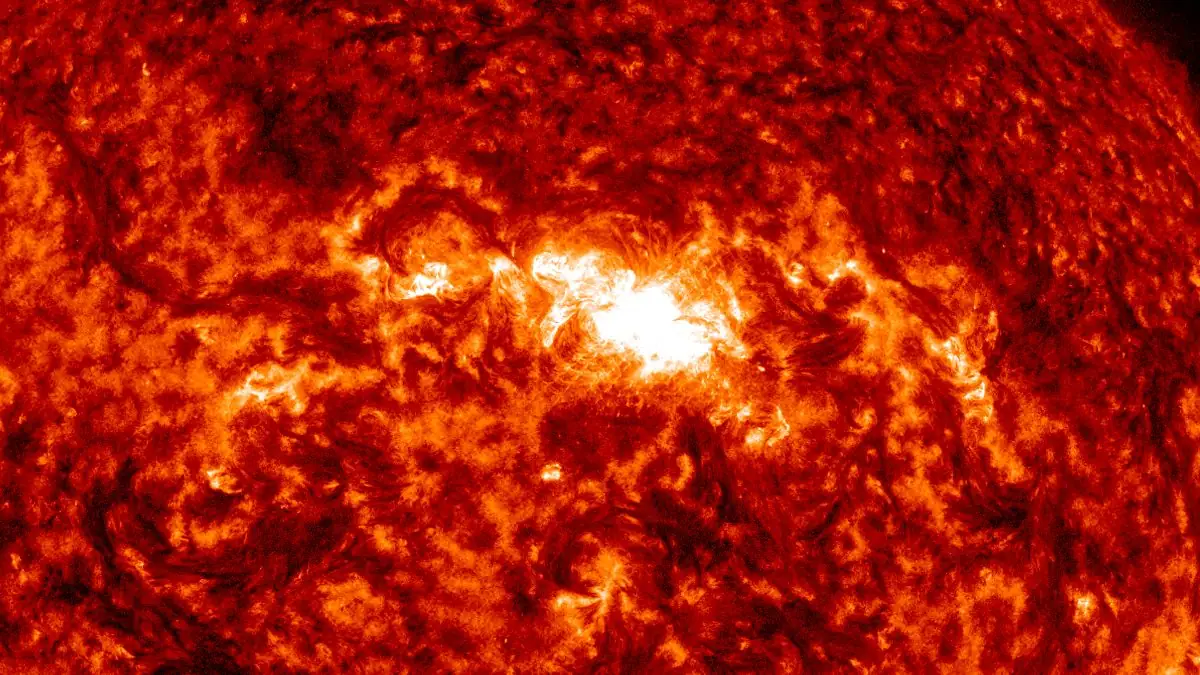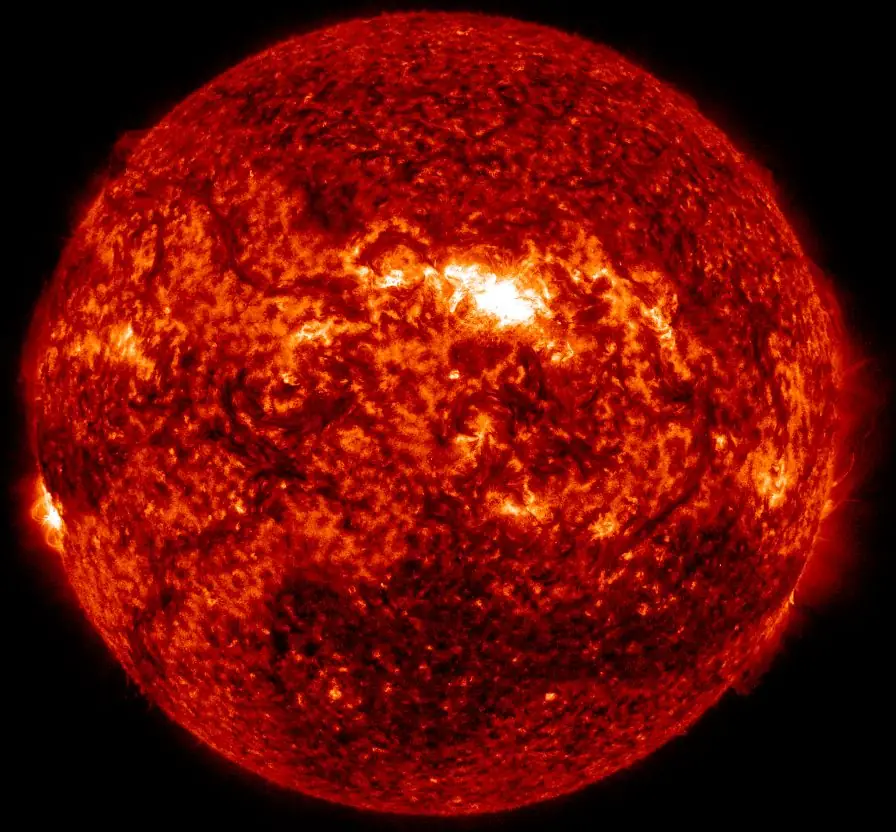Impulsive X1.2 solar flare erupts from geoeffective Active Region 4114
An impulsive solar flare measuring X1.2 erupted from Active Region 4114 at 21:49 UTC on June 17, 2025. The event started at 21:38 and ended at 21:54 UTC.

X1.2 solar flare on June 17, 2025. Credit: NASA SDO/AIA 304, Helioviewer, The Watchers
A 10cm Radio Burst lasting 1 minute and with a peak flux of 200 sfu was detected starting at 21:46 UTC. This noise can cause interference for sensitive receivers, including radar, GPS, and satellite communications.
Type II or IV radio emissions were not detected, suggesting that a strong or major coronal mass ejection (CME) was unlikely to have been associated with this event.
Radio frequencies were forecast to be most degraded over the Pacific Ocean at the time of the flare.
The flare erupted from Active Region 4114 (Beta-Gamma-Delta), currently located near the center of the solar disk and capable of producing more strong to major solar flares. This position increases the likelihood of Earth-directed CMEs in the coming days.
There is a 75% chance of M-class and a continued 10% chance of X-class solar flares through June 19, mainly from AR 4114 and AR 4115.



In 24 hours to 12:30 UTC on June 17, solar activity was at moderate levels, dominated by an M1.1 flare at 14:55 UTC on June 16 and several C-class flares, the largest being a C9.9 at 06:21 UTC on June 17.
There are currently 8 numbered active regions on the Earth-side of the Sun.

AR 4105 (S14W98 – Beta)
AR 4109 (S17W90 – Beta)
AR 4110 (N05W83 – Beta)
AR 4111 (N15W26 – Beta)
AR 4113 (N10W09 – Alpha)
AR 4114 (N18W01 – Beta-Gamma-Delta)
AR 4115 (N21E12 – Beta)
AR 4116 (S11W03 – Beta)
Greater than 2 MeV electron flux was at normal to moderate levels over the past 24 hours, and greater than 10 MeV proton flux remained at background levels. The electron flux is forecast to reach moderate to high levels through June 19 under influence of a coronal hole high speed stream. There is a chance for elevated proton flux on June 17 due to activity related to AR 4114, decreasing through June 19.
Solar wind parameters continued to reflect the influence of a coronal hole high speed stream, with total magnetic field around 7–10 nT, north-south Bz from +8 to -5 nT, and speeds 470–520 km/s. Similar conditions are forecast to continue through June 19, with a slight chance of an enhancement on June 18 from a CME-related interplanetary shock.
The geomagnetic field was quiet over the past 24 hours. Coronal hole high speed stream activity is expected to cause unsettled to isolated active periods through June 19, with a slight chance for a G1 – Minor geomagnetic storm on June 18 due to the possible arrival of an interplanetary shock.
I'm a dedicated researcher, journalist, and editor at The Watchers. With over 20 years of experience in the media industry, I specialize in hard science news, focusing on extreme weather, seismic and volcanic activity, space weather, and astronomy, including near-Earth objects and planetary defense strategies. You can reach me at teo /at/ watchers.news.


Commenting rules and guidelines
We value the thoughts and opinions of our readers and welcome healthy discussions on our website. In order to maintain a respectful and positive community, we ask that all commenters follow these rules.